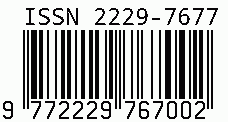
International Journal on Science and Technology
E-ISSN: 2229-7677
•
Impact Factor: 9.88
A Widely Indexed Open Access Peer Reviewed Multidisciplinary Bi-monthly Scholarly International Journal
Plagiarism is checked by the leading plagiarism checker
Call for Paper
Volume 16 Issue 4
October-December 2025
Indexing Partners



















Quantum Technology and its Interplay with Electronics, Physics and Computer Science
| Author(s) | Dr. Vijay Satya Prasad Yarramsetti |
|---|---|
| Country | India |
| Abstract | This report explores the profound and symbiotic relationship between quantum technology and classical electronics, highlighting their convergence as a transformative force in modern engineering and computation. It details how classical electronic systems are indispensable for the control, measurement, and operation of nascent quantum technologies—including quantum computing, communication, sensing, and simulation—particularly through advanced cryogenic and interface architectures. Concurrently, the inherent scaling limitations of classical electronics at the nano scale are driving innovation inspired by quantum mechanical principles, leading to the development of next-generation devices and the exploration of exotic quantum materials. The analysis addresses significant technical challenges such as noise, scalability, latency, and thermal management, alongside the immense economic and strategic opportunities presented by this frontier. Ultimately, the report projects a future defined by seamless quantum-classical hybrid systems, underscoring that the advancement of quantum technology is deeply reliant on breakthroughs in classical electronics, physics, and computer science. Quantum technology represents a transformative frontier that bridges fundamental physics, advanced electronics, and cutting-edge computer science. Rooted in the principles of quantum mechanics—such as superposition, entanglement, and tunneling—quantum technologies are reshaping how information is processed, transmitted, and measured. The interplay between physics provides the theoretical foundation, while electronics enables precise control and manipulation of quantum systems through devices like qubits and quantum sensors. Meanwhile, computer science contributes with algorithms, error correction, and software frameworks essential for quantum computation and communication. This interdisciplinary synergy is driving breakthroughs in quantum computing, quantum cryptography, and quantum sensing, promising profound impacts on industries ranging from cybersecurity to materials science and artificial intelligence. |
| Keywords | quantum computing, communication, sensing, simulation |
| Field | Physics > Nano Technology / Nuclear |
| Published In | Volume 16, Issue 3, July-September 2025 |
| Published On | 2025-07-10 |
| DOI | https://doi.org/10.71097/IJSAT.v16.i3.6856 |
| Short DOI | https://doi.org/g9sx59 |
Share this


CrossRef DOI is assigned to each research paper published in our journal.
IJSAT DOI prefix is
10.71097/IJSAT
Downloads
All research papers published on this website are licensed under Creative Commons Attribution-ShareAlike 4.0 International License, and all rights belong to their respective authors/researchers.

